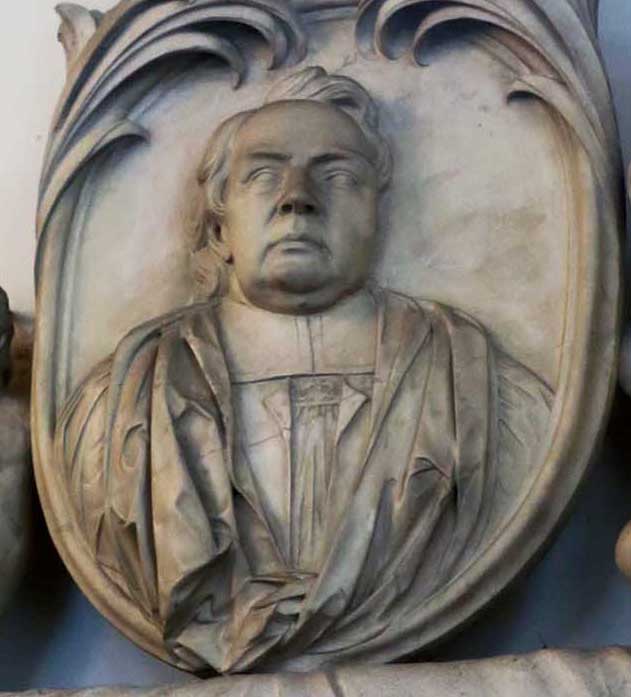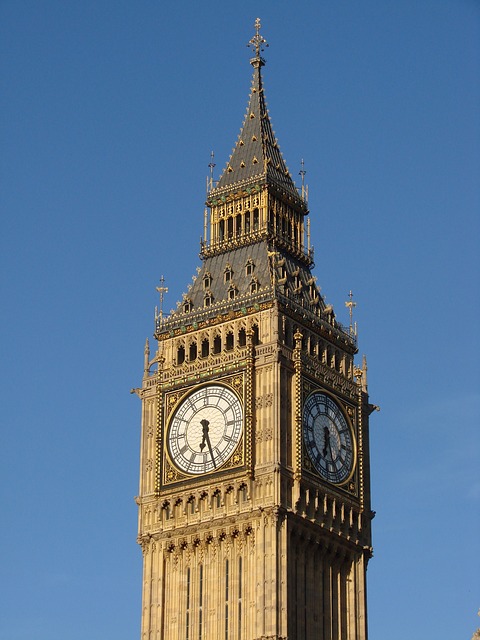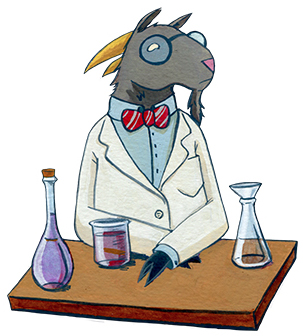John Tillotson a Post English Reformation Preacher
From Londonhua WIKI
Revision as of 13:13, 2 June 2017 by Cmtillotson (talk | contribs)
John Tillotson a Post English Reformation Preacher
|
John Tillotson | |
| Position | Former Archbishop of Canterbury |
|---|---|
| Birth and Death Years | 1630-1694 |
Contents
Abstract
The paragraph should give a three to five sentence abstract about your entire London HUA experience including 1) a summary of the aims of your project, 2) your prior experience with humanities and arts courses and disciplines, and 3) your major takeaways from the experience. This can and should be very similar to the paragraph you use to summarize this milestone on your Profile Page. It should contain your main Objective, so be sure to clearly state a one-sentence statement that summarizes your main objective for this milestone such as "a comparison of the text of Medieval English choral music to that of the Baroque" or it may be a question such as "to what extent did religion influence Christopher Wren's sense of design?"
Introduction
I suggest you save this section for last. Describe the essence of this project. Cover what the project is and who cares in the first two sentences. Then cover what others have done like it, how your project is different. Discuss the extent to which your strategy for completing this project was new to you, or an extension of previous HUA experiences.
As you continue to think about your project milestones, reread the "Goals" narrative on defining project milestones from the HU2900 syllabus. Remember: the idea is to have equip your milestone with a really solid background and then some sort of "thing that you do". You'll need to add in some narrative to describe why you did the "thing that you did", which you'd probably want to do anyway. You can make it easy for your advisors to give you a high grade by ensuring that your project milestone work reflects careful, considerate, and comprehensive thought and effort in terms of your background review, and insightful, cumulative, and methodical approaches toward the creative components of your project milestone deliverables.
PLEASE NOTE: this milestone template has only a few sections as examples, but your actual milestone should have many relevant sections and subsections. Please start to block out and complete those sections asking yourself "who, what, when, where, and why".
Remember, as you move toward your creative deliverable, you're going to want/need a solid background that supports your case, so you want it to paint a clear and thorough picture of what's going on, so that you can easily dissect your creative component and say "This thing I did is rooted in this aspect of my background research".
Section 1: Background
Now you're on your own! Your milestone must include a thorough and detailed background section with detailed subsections; if additional articles are required to be referenced in this background section, create those as well and link to them (the creation of all pages is tracked by the wiki site and attributed to your username). Remember to use rich multimedia whenever possible. Consult the Help page as needed! Remember, if you don't see an article on this site that is an integral part of your project, create it! Your entire page-creating/page-editing history factors into your overall grade.
The English Reformation
Overview
The English Reformation refers to the time period and course of events that caused England to break away from the "Catholic Church" and form the Anglican "Church of England". This change was driven starting with Henry VIII, and continued to be driven by later English monarchs. This was also coupled with a desire of the English people for reform because of the corrupt state of the Catholic Church at the time.[1] This time period and the aftermath can be characterized by both high Catholic-Protestant tension and violence.
Origins with Henry VIII (English Reformation)
When Martin Luther dispatched his 95 thesis in Germany during 1517 Henry VIII, the English Monarch at the time, refuted the anti-catholic doctrine.[2] In the year 1521 Henry VIII published a work, in conjunction with Thomas More, titled "Assertio Septem Sacramentorum" (Defense of the Seven Sacraments) refuting Luther's teaching.[3] In this work Henry VIII defended transubstantiation, the real presence of Christ in the sacrament of the Eucharist, as well as masses for the dead. The secondary motive for creating this work was also to promote himself in England as well as abroad.[4] Henry VIII would later be awarded the title "Defender of the Faith" by Pope Leo X.[5] At this point it would seem impossible that Henry VIII would later become the most influential person to lead England into the reformation, but that is exactly what would transpire.
At this time religious unrest had already begun to take hold in England as many believed the Catholic Church to have corrupt flaws.[6][7] Later Henry VIII's wife, Catherine of Aragon, was unable to produce a male heir to the throne, and this began to trouble the king greatly.[8] The king came to believe that God was purposely not giving him a son in accordance with the Bible [9] in the book of Leviticus 20:21 it says "If a man marries his brother's wife it is an act of impurity; he has dishonored his brother. They will be childless." Catherine had previously been married to Henry VIII's brother and for this reason Henry believed he was childless, and that he needed to seek a papal annulment from Pope Clement VII.[10] However due to the Sacking of Rome Clement was unable to comply with Henry's request.[11] At this time Henry had also developed an interest in having Anne Boleyn replace Catherine as his queen.[12] This desire for an heir eventually led Henry to take matters into his own hands by convincing Parliament to create the Church of England during the years from 1534-1539, officially separating England from the Catholic Church.[13] Henry VIII a man once praised by the Pope for his devotion had now severed all ties to the papacy.
Bloody Mary (Catholic Restoration)
Life of John Tillotson
Early Life
John Tillotson was born in Sowerby, Yorkshire during 1630. [14][15] However very little is known about his early childhood other than the fact that his father was a Puritan clothier. The next commonly acknowledged event in Tillotson's life is his studies at Clare Hall, Cambridge where he would become a fellow and graduate in 1651.[16]
Early Religious Career
Tillotson was ordained into the Church of England in 1661.[17] Later in 1664 he became a preacher at St. Lawrence Jewry where he would gain notice for his talents giving sermons.[18]
Dean of Canterbury
Dean of St. Paul's
Archbishop of Canterbury
Section 2: Deliverable
In this section, provide your contribution, creative element, assessment, or observation with regard to your background research. This could be a new derivative work based on previous research, or some parallel to other events. In this section, describe the relationship between your background review and your deliverable; make the connection between the two clear.
Subsection 1
...use as many subsections or main sections as you need to support the claims for why what you did related to your Background section...
Subsection 2
...and so on and so forth...
Gallery
Conclusion
In this section, provide a summary or recap of your work, as well as potential areas of further inquiry (for yourself, future students, or other researchers).
References
Add a references section; consult the Help page for details about inserting citations in this page.
Attribution of Work
For milestones completed collaboratively, add a section here detailing the division of labor and work completed as part of this milestone. All collaborators may link to this single milestone article instead of creating duplicate pages. This section is not necessary for milestones completed by a single individual.
External Links
If appropriate, add an external links section
Image Gallery
If appropriate, add an image gallery
Category tags
- ↑ Servini, P. (2002). The English reformation. London: Hodder & Stoughton. P.P. 1
- ↑ Hillerbrand, H. J. (2017, January 24). Martin Luther. Retrieved June 02, 2017, from https://www.britannica.com/biography/Martin-Luther
- ↑ Wilson, D. (2012). A Brief History of The English Reformation (1st ed.). Philadelphia: Running Press Book Publishers. P.P. 92
- ↑ Wilson, D. (2012). A Brief History of The English Reformation (1st ed.). Philadelphia: Running Press Book Publishers. P.P. 93
- ↑ Wilson, D. (2012). A Brief History of The English Reformation (1st ed.). Philadelphia: Running Press Book Publishers. P.P. 93
- ↑ Wilson, D. (2012). A Brief History of The English Reformation (1st ed.). Philadelphia: Running Press Book Publishers. P.P. 93
- ↑ Servini, P. (2002). The English reformation. London: Hodder & Stoughton. P.P. 1
- ↑ Wilson, D. (2012). A Brief History of The English Reformation (1st ed.). Philadelphia: Running Press Book Publishers. P.P. 102
- ↑ Wilson, D. (2012). A Brief History of The English Reformation (1st ed.). Philadelphia: Running Press Book Publishers. P.P. 103
- ↑ Wilson, D. (2012). A Brief History of The English Reformation (1st ed.). Philadelphia: Running Press Book Publishers. P.P. 104
- ↑ Wilson, D. (2012). A Brief History of The English Reformation (1st ed.). Philadelphia: Running Press Book Publishers. P.P. 106
- ↑ Wilson, D. (2012). A Brief History of The English Reformation (1st ed.). Philadelphia: Running Press Book Publishers. P.P. 105
- ↑ Wilson, D. (2012). A Brief History of The English Reformation (1st ed.). Philadelphia: Running Press Book Publishers. P.P. 141
- ↑ Cannon, J.(2009). Tillotson, John. In A Dictionary of British History. : Oxford University Press. Retrieved 31 May. 2017, from http://www.oxfordreference.com/view/10.1093/acref/9780199550371.001.0001/acref-9780199550371-e-3412.
- ↑ 1911 Encyclopædia Britannica/Tillotson, John. (n.d.). Retrieved May 31, 2017, from https://en.wikisource.org/wiki/1911_Encyclop%C3%A6dia_Britannica/Tillotson,_John
- ↑ (2015). Tillotson, John. In The Oxford Companion to British History. : Oxford University Press. Retrieved 31 May. 2017, from http://www.oxfordreference.com/view/10.1093/acref/9780199677832.001.0001/acref-9780199677832-e-4201.
- ↑ (2015). Tillotson, John. In The Oxford Companion to British History. : Oxford University Press. Retrieved 31 May. 2017, from http://www.oxfordreference.com/view/10.1093/acref/9780199677832.001.0001/acref-9780199677832-e-4201.
- ↑ (2015). Tillotson, John. In The Oxford Companion to British History. : Oxford University Press. Retrieved 31 May. 2017, from http://www.oxfordreference.com/view/10.1093/acref/9780199677832.001.0001/acref-9780199677832-e-4201.




